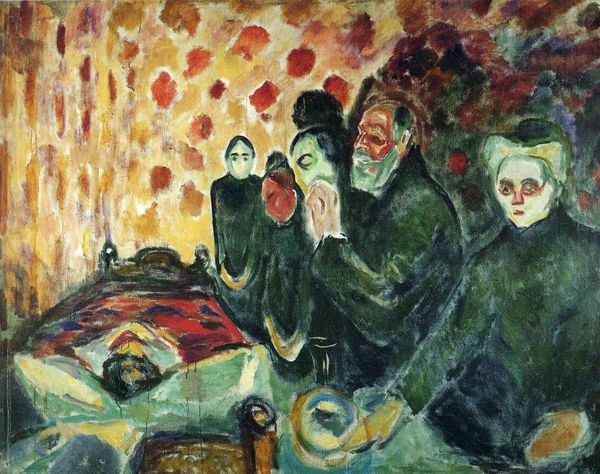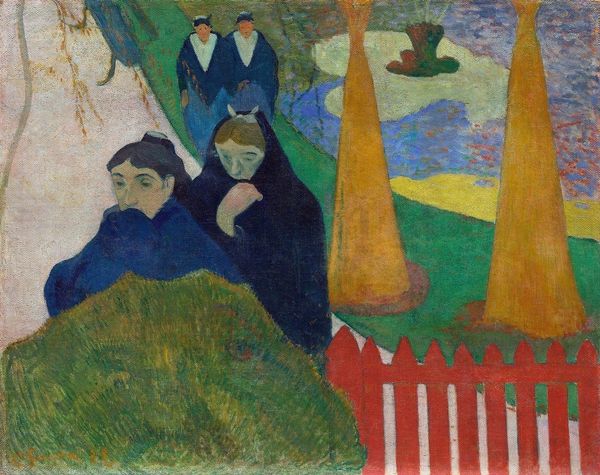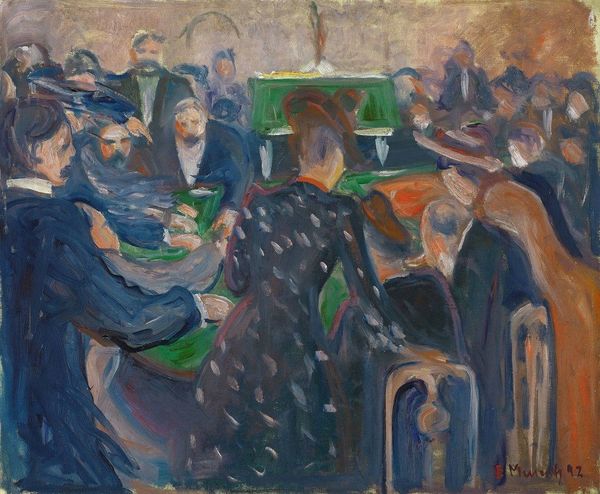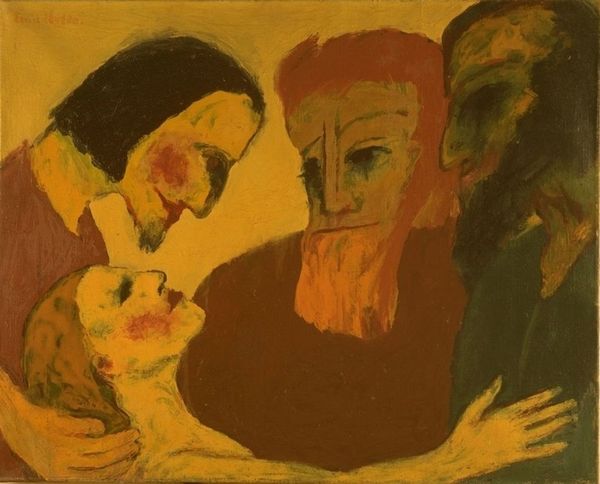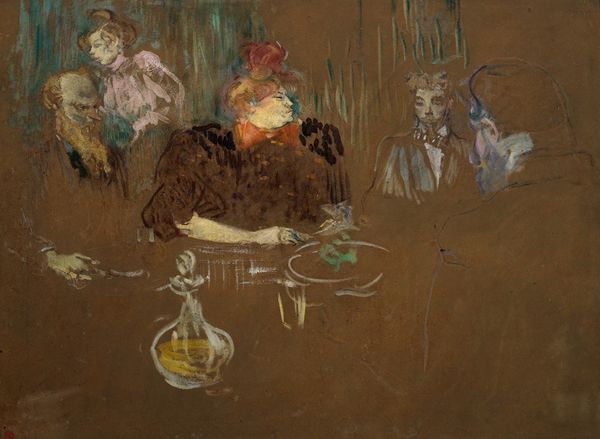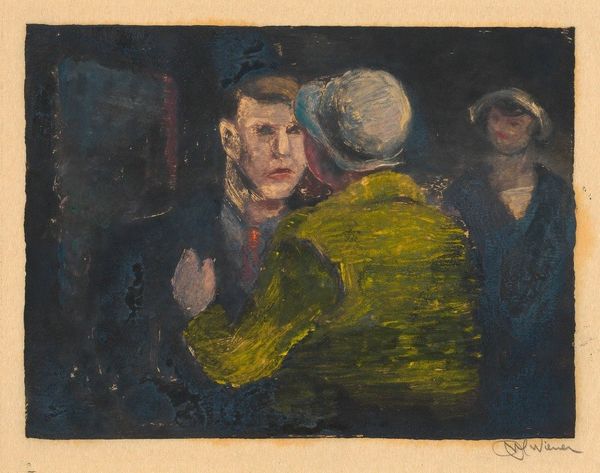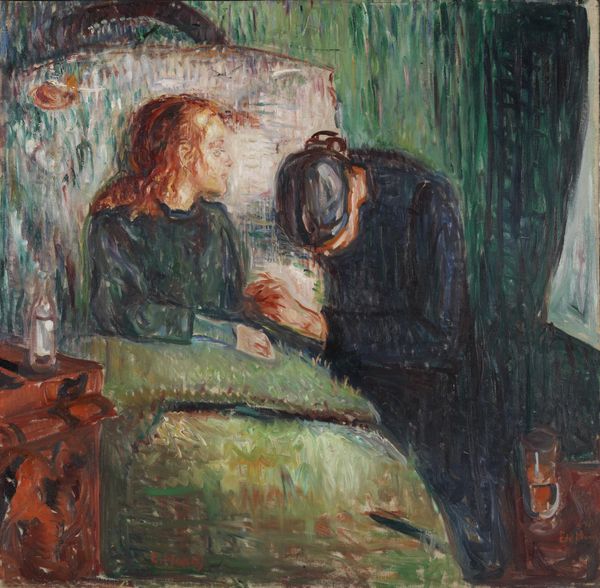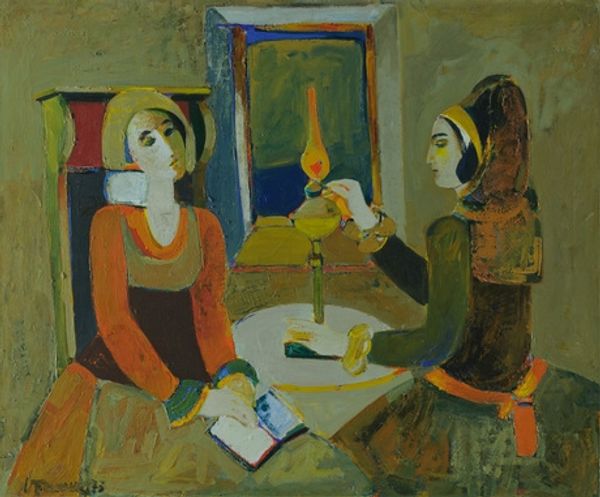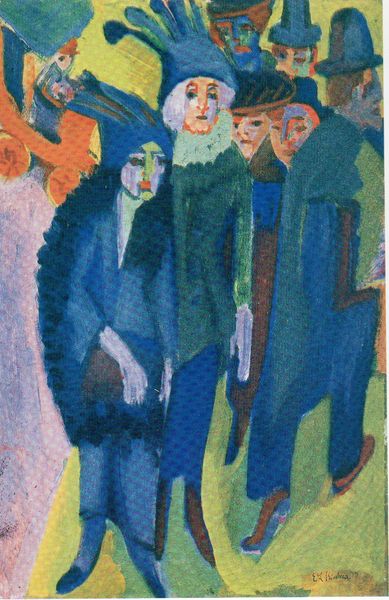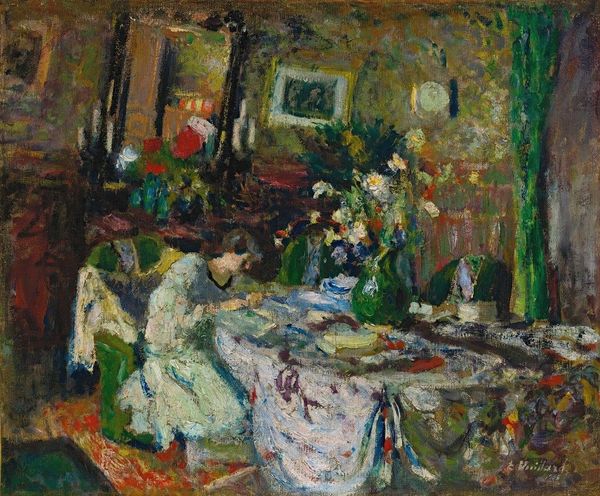
oil-paint, canvas
#
portrait
#
narrative-art
#
oil-paint
#
oil painting
#
canvas
#
expressionism
#
history-painting
#
expressionist
Dimensions: 140.3 cm (height) x 182.4 cm (width) (Netto), 157.5 cm (height) x 200 cm (width) x 6.8 cm (depth) (Brutto)
Editor: This is "Death Struggle," an oil on canvas painting by Edvard Munch from 1915. It feels incredibly raw, like peering into a very private moment. The brushstrokes are so visible; it’s almost as if you can feel the texture of the paint itself. How do you read this work? Curator: I see here a potent distillation of Munch's expressionistic tendencies focusing on the visceral materiality of the painting. Consider the thick application of paint: the sheer labor involved in building up these layers. Look at the way the paint itself seems to embody the weight of grief. And note, the social context here, 1915 – amidst war, how might this scene of domestic grief reflect the wider anxieties of the time, perhaps suggesting how all struggles share basic material realities? Editor: That’s a fascinating point about the materiality reflecting the emotional weight. So you’re saying that even the way the paint is applied – the actual physical process – contributes to the overall meaning? Curator: Precisely. It challenges that clear boundary between labor and artist. Look, even the bottles on the bedside table, those simple, mass-produced items are made to stand as silent witnesses within a hand-made painting. Consider what it suggests about art's relationship to material culture. Editor: So, beyond just being a representation of a scene, the artwork, itself, becomes an object imbued with meaning through the act of its creation. This is really interesting. How do you think contemporary viewers engage with this material reality compared to viewers in 1915? Curator: That is a wonderful question. Modern audiences perhaps focus less on narrative details. In 1915, a more clear recognition of a typical death scene might have had impact, yet, there is also the question of class here, no doubt related to hospital environments and healthcare. These factors become embedded into the painting. Editor: So much to think about! It really shifts my focus from just "what" the painting depicts to "how" it was made, and what that process communicates about the social landscape. Curator: Indeed. By centering our focus on the means of production and its embedded cultural value we find the painting resonates as powerfully today as it must have over a century ago.
Comments
No comments
Be the first to comment and join the conversation on the ultimate creative platform.
